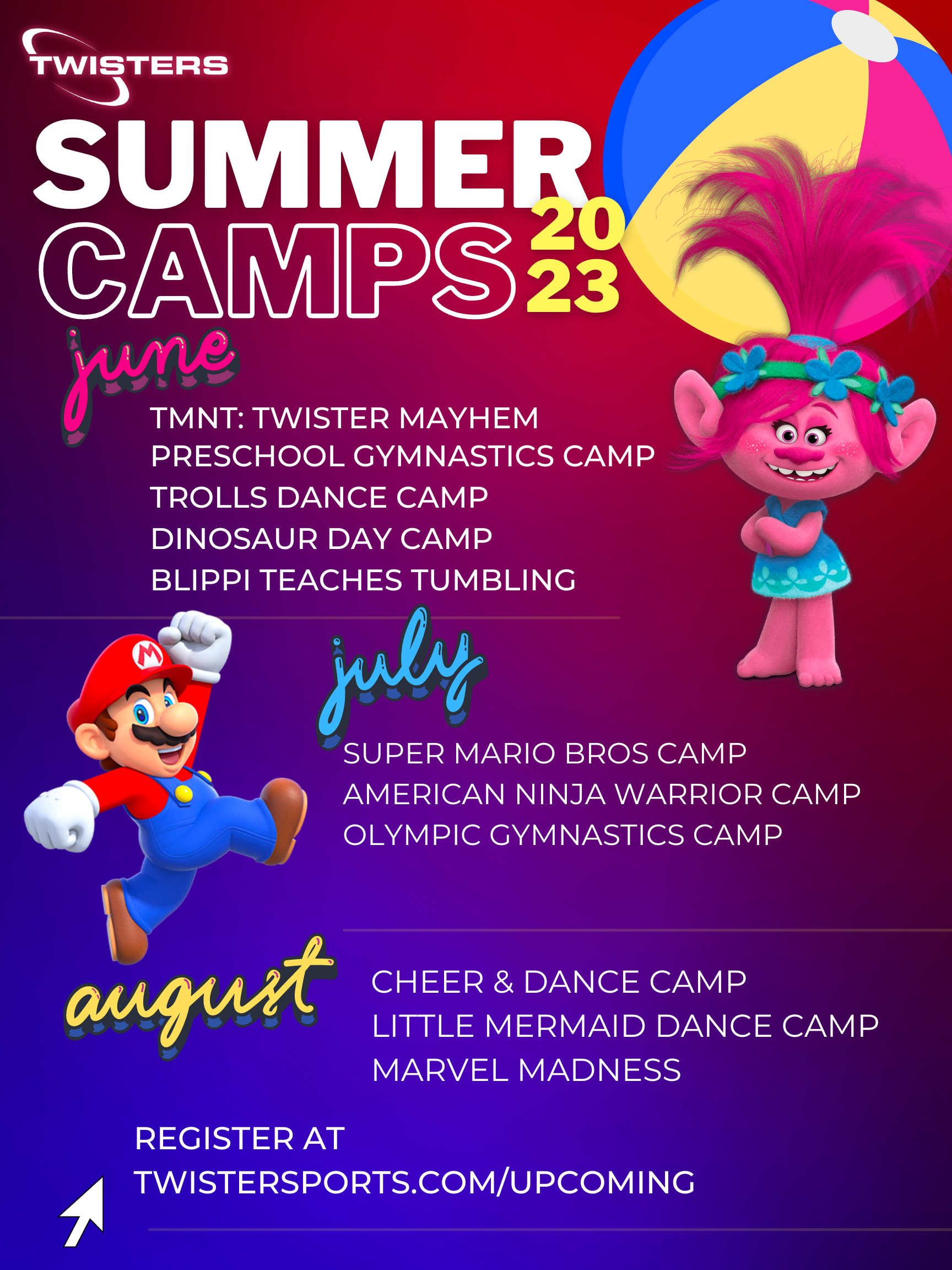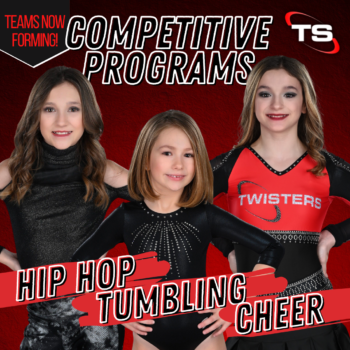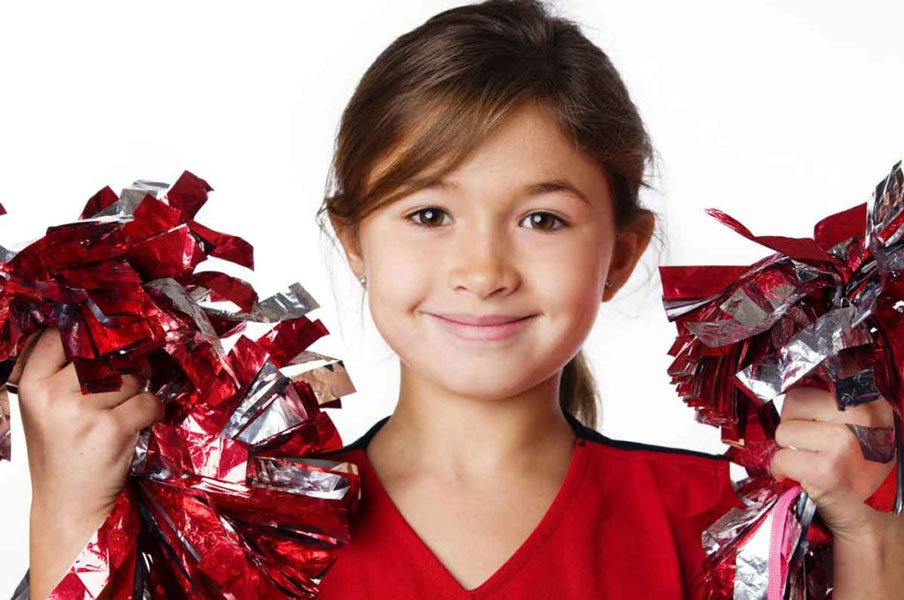The reasons why your gymnast, cheerleader, tumbler or ninja might be struggling and how we can help.
In this weekly blog post, we’ll be discussing one of the most prominent questions we get in all facets of all-star cheerleading, tumbling, dance, gymnastics and ninja warrior.
Your 8-year-old child has attended a weekly beginner tumbling class for almost a year. She seems to be cartwheeling around the house everyone. In fact, she’s upside down more than she’s right-side up. You see her watching her favorite show while doing the splits and that trampoline in the backyard – well, it was well-worth the cost.
Your child obviously loves tumbling and is passionate about it. So why isn’t she progressing.
This is a question we hear more often than any other when it comes to a students tumbling. Progression is often what keeps the students coming back. They work hard and love the sport, so naturally, they want to move up to more difficult classes. However sometimes progression does not always move forward as quickly as the student or the parents want it to. So, what’s the process to ensure the athlete is in a constant state of progression without moving him or her forward beyond the skills they should safely be working at any given moment?
Here’s a little insight in to the process our coaches here at Twisters take when an athlete has seen a delay in progress:
1. We find out what the athlete and his or her parents’ concerns are.
2. We identify what is holding the child back from progressing.
3. As a staff, we collaborate to make a plan for the athlete.
4. We follow up with the athlete to ensure follow through.
First off – never quit. Don’t give up or let your child give up because you’re not seeing progress. Ninety-nine percent of the time, this is something we can fix, and we don’t want to see their progress delay or dissolve just because they’re in a state of limbo with their skills. It’s important for us to fully understand what the parents and the athlete are concerned about. Is your concern that your child has been working on a back handspring for a year? Are you concerned that they used to have a skill and no longer do? Has your child’s flexibility started to diminish over the years?
We totally understand why these areas might cause a parent to be concerned and a child to be frustrated. Most importantly, things take time. Think about this process as if you’re making a pizza. You have to plant tomatoes, onions, garlic and herbs and wait for them to grow. Only after they’ve grown, can they be picked, washed, cut and cooked. Then you have to mix the ingredients to make the dough. Only after you have your dough and sauce, you can shred the cheese and assemble the pizza. (We won’t even talk about how to make cheese….because we have no clue!) Even after all that, the pizza is assembled, but it has to bake.
With tumbling, an athlete has to learn the basics. They need to understand how the body operates. They have to learn body positions and build their muscle memory to do a particular skill the same way with technical consistency. In the meantime, we are building the athlete’s flexibility and strength through their skills, but even this needs additional work outside of tumbling itself. Once the foundation is built you can start teaching the more difficult technical skills. With each new set of skills – this process is repeated. The harder skills are harder because they take more strength, more flexibility, more muscle memory and quite honestly – more courage. We want our athletes to be confident in their own skills, and this doesn’t happen overnight. They have to build that trust in themselves and their coaches by setting and achieving goals, demonstrating self-discipline and putting their passion to work. This is how athletes build confidence.
On a side note, we truly believe that confidence in the gym leads to confidence in the child. A confident child becomes an adult who makes good choices and doesn’t cave in to peer pressure.
After we figure out your concerns – we identify the problem. Often, we find out that the child is attending class but not spending additional time practicing at home. If your child’s goal is to have fun and make friends, that’s an honorable thing – and we’re OK with that. But if your child is seeing others doing skills and wanting to learn those as well – practice only once a week isn’t ideal. As an adult, think of your workout regimen. If you’re trying to increase your weights, you need to lift several times per week. If you’re doing it once a week, chances are you’re sore for several days afterwards and your weight isn’t increasing very quickly. Consistency is key. Our tumbling, gymnastics and cheerleading coaches are excellent at giving our athletes homework from week to week. We can give them workout sheets, drills and flexibility skill they can work between classes. We can show them how to safely do each of these skills and then help keep them accountable!
Every once in awhile, we have an athlete who is truly working hard both in class and at home and just not progressing. Often, we find that the athletes are practicing at home, but might be practicing a skill with incorrect form. This ends up creating a never ending cycle of fixing skills, which can make it more difficult to progress. When this happens, our coaches meet with the director, gym manager and owner to develop a plan for the child. When this happens, we always have more options. Things that have worked in the past include: 1) Adding another tumbling skills class so the athlete can get more instruction to build their muscle memory more consistently. 2) Signing the athlete up for a few private lessons. Sometimes the athlete just needs some additional troubleshooting with a coach. We need to pick apart the skill and find out what’s not working or why their body is wanting to move a different way. 3) We host monthly skills clinics that can benefit athletes by getting practice in specific areas. 4) Sometimes they just need to continue building their flexibility and strength, which is why we began offering a yoga and flexibility class twice a week. This is fantastic for athletes of all skill levels who need to build core strength and get a bit more limber.
You’ve heard the phrase, “It takes a village to raise a child.” Well, here at Twisters, we know that it takes a village to teach a skill. We rely on our front desk staff to communicate with our gym parents; We rely on our coaches to teach and demonstrate skills to the athletes; We rely on our directors to teach our coaches new and innovative drills to ensure our athletes get the very best instruction and the safest environment. The best thing we can do after setting a plan with an athlete is follow up! If you’ve ever worked on homework with your child, you know it can be tough. Sometimes it’s easier to hire a tutor to make the experience more pleasant. We understand that if you are constantly having to remind your child to do their exercises and keep them accountable, it can put a strain on the process. For that reason, we make sure to follow up with athletes who have reached out to us for help so we can ensure they’re doing what the need to do in order to succeed.
The big takeaways here are to be patient. Trust the process. Trust your child’s coaches, and know that we are all here as a village to work together. We want to see your child achieve his or her dreams, and we’ll work tirelessly to make it happen.
This blog is a collaboration post written by Patrick Davison, Director of Tumbling at Twister Sports in Warrensburg, MO and Danielle Johnston, Twister Sports owner. They have a combination of 40 years of experience in the field.








